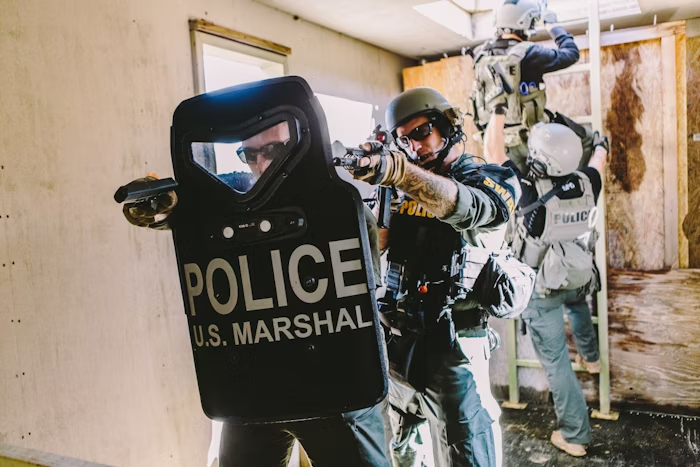Dale Taylor, CEO of Blueridge Armor, estimates about 60% of the shields out there offer protection against handgun rounds while only about 40% are rifle rated. True cost is a factor, with the rifle-rated shields costing more, but weight also comes into play.
As the risks faced by law enforcement officers continue to grow, particularly during civil unrest or routine calls, ballistic shields have become a vital tool for enhancing officer safety. With a wide variety of models available, selecting the right shield for a department’s needs can be a complex decision.
Ballistic shields gained further attention after the tragic school shooting in Uvalde, TX, where it was reported that multiple shields were available at the scene, but only one was rifle-rated. This highlighted the importance of having the proper protective equipment for high-risk situations.
Following the incident, the state of Texas allocated a $50 million grant program aimed at providing local law enforcement agencies with funds to purchase bullet-resistant shields. The program specifically supports the acquisition of shields that meet National Institute of Justice (NIJ) Level III, III+, or IV standards.
A critical component of the grant also mandates that all officers receiving shields through the program must complete Advanced Law Enforcement Rapid Response Training (ALERRT), ensuring they are properly trained to use the equipment effectively.
Currently, most ballistic shields in circulation are rated for handgun protection, though rifle-rated shields are becoming increasingly common. While rifle-rated shields typically come with a higher price tag, advancements in technology have made them lighter and more practical for everyday use. The weight of rifle-rated shields is approaching that of handgun shields, which previously weighed around 16 to 17 pounds.
Despite the lighter options available, rifle-rated shields still tend to cost significantly more than handgun-rated ones, with the price difference running into the thousands of dollars. However, with continued innovation and increased demand, especially from officers working in schools, we may see more compact and versatile shield kits designed for ease of use in the field.
Looking ahead, smaller, more portable shields are being developed that can be stored in vehicles for quick access in emergency situations. These evolving designs offer officers greater flexibility in responding to immediate threats while maintaining a low-profile, non-tactical appearance.
Choosing the right ballistic shield for a department can be a tough decision, and several important factors need to be considered. When selecting a shield, here are key aspects to think about:
1. Purpose
Consider the intended use of the shield. Is it meant for rapid deployment by individual officers, stored in a patrol car, or is it designed for a SWAT team, to be kept in an armored vehicle like a Bearcat?
2. Protection Level
Shields typically come in two main protection levels: Level IIIA (handgun-rated) and Level III (rifle-rated). Handgun shields are lighter, more maneuverable, and easier to deploy. In contrast, rifle shields provide protection against a broader range of threats but are heavier and less agile.
3. Size
Ballistic shields vary in size, from compact 11″x15″ models to larger 24″x48″ options. Smaller shields are more portable and easier to store but offer less coverage, while larger shields provide better protection but require more space and can be harder to manage. Typically, entry teams use shields around 24″x36″, while smaller shields are suited for individual officer protection.
4. Viewport
The inclusion of a viewport (a transparent section for visibility) is another consideration, particularly for shields 18″x30″ or larger. While beneficial, viewports add significant weight—up to one-third of the shield’s total weight—so some manufacturers offer shields without this feature as an option.
5. Lighting
Lighting options for shields range from a simple flashlight mounted on a detachable bracket to fully integrated light and handle systems. Choose a setup that meets your operational needs for visibility during critical moments.













Comments